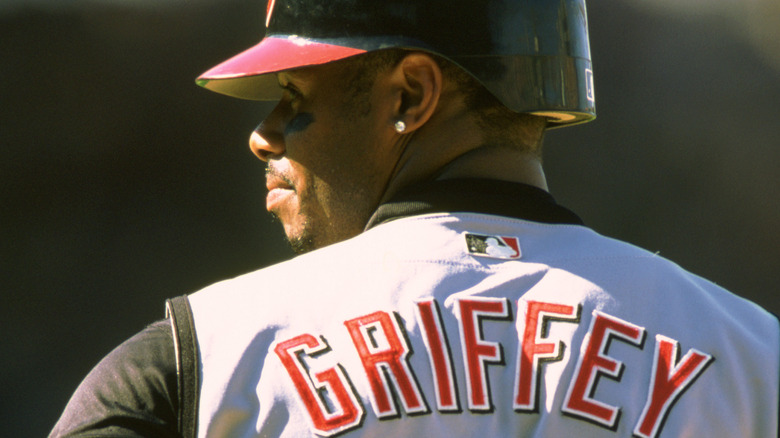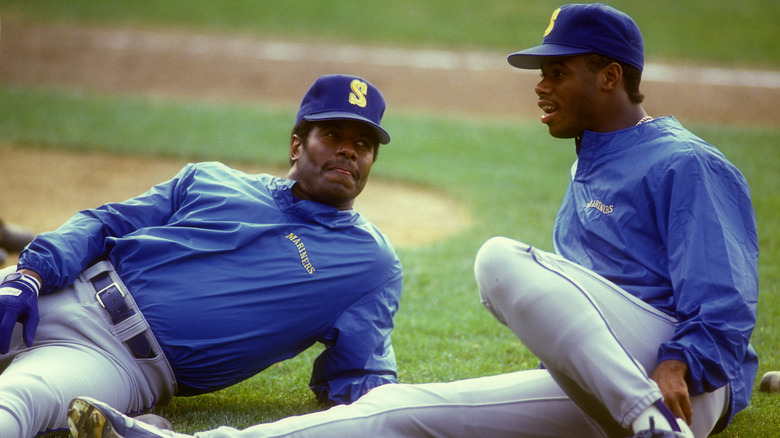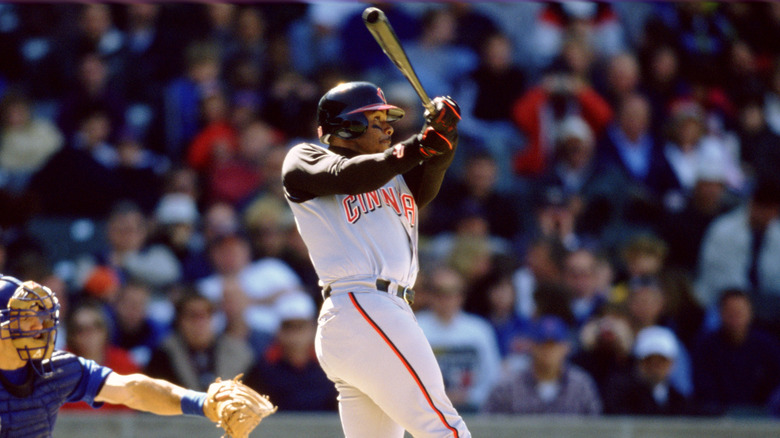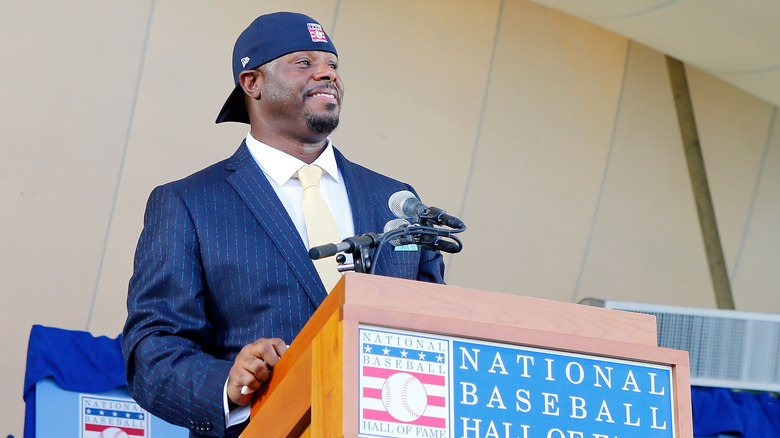Why Ken Griffey Jr. Is Still Getting Paid By The Cincinnati Reds Post-Retirement
Fans of the New York Mets celebrate Bobby Bonilla Day every year on July 1. Every year on that date — until 2035 — the Mets pay the former third basemen almost $1.2 million due to the team buying out the remainder of his contract in 2000. According to ESPN, at the time, Bonilla was owed just shy of $6 million but agreed to a deal with the team that called for annual payments from 2011 through 2035, with an 8% interest rate.
While this is far and away the most famous example of a salary deferral in Major League Baseball, it's not the only instance of this kind of thing happening. Manny Ramírez is getting paid a total of $24.2 million in payments lasting through 2026, while current Mets pitcher Max Scherzer is getting $105 million from his former club, the Washington Nationals, in installments through 2028. Another player that has a similar deal set up is Hall of Fame center fielder Ken Griffey Jr.
The start of Ken Griffey Jr.'s career
George Kenneth Griffey Jr. grew up around baseball. His father was a professional baseball player himself, and a wildly successful one at that. Ken Griffey Sr. was an outfielder for the Cincinnati Reds when Ken Griffey Jr. was a kid, and that allowed him to spend a lot of time in Major League clubhouses surrounded by some of the sport's royalty, per SABR.
Ken Griffey Jr. grew up to become a standout ballplayer in high school, and given his famous surname — and first name — he attracted a lot of attention. It's always tough for the child of a legendary athlete to start their own career due to near-constant comparisons to their parents, but Griffey Jr. had a particularly unusual debut when he was drafted by the Seattle Mariners with the first-overall pick in the 1987 MLB June Amateur Draft (via Baseball Reference). Ken Griffey Sr. was still playing in the league, and during his son's second season in 1990, he joined the Seattle Mariners, making the Griffeys the first father and son to play on the same team. On September 14, 1990, they even hit back-to-back home runs, another Major League Baseball first.
After his father retired, Ken Griffey Jr.'s career continued to skyrocket. He received numerous All-Star honors and was named American League MVP in 1997, but by 2000, he was looking for a change of scenery and inked a deal with the same club with which his father spent the bulk of his career: the Cincinnati Reds.
Griffey Jr.'s time with the Reds didn't go according to plan
Ken Griffey Jr. was traded to Cincinnati in February 2000 and then signed a nine-year extension for a whopping $112.5 million (per SABR). Griffey picked up where he left off in Seattle with numbers comparable to what he was putting up for the Mariners (via Baseball Reference). However, he hit a major snag when injuries sidelined him for 50% of the team's games between the 2002 and 2004 seasons, according to Complex.
He returned to form in 2005 and even earned another All-Star nod in 2007, but his time with the Reds was winding down. Part of the way through the 2008 season, the Reds struck a deal that sent the slugger to the Chicago White Sox. Griffey only played 41 games with the White Sox before returning to Seattle for the 2009 and 2010 seasons, after which he called it a day on his 22-year career.
Why the Reds are still paying Ken Griffey Jr.
According to CBS Sports, it's thought that around half of Ken Griffey Jr.'s $112.5 million deal with the Reds was deferred and paid in yearly installments of $3.59 million from 2009 to 2024. This followed a structure first utilized by the New York Mets for pitcher Bret Saberhagen and then most famously — by the Mets once again — for Bobby Bonilla (via ESPN).
Despite having not played a professional baseball game in over a decade, Ken Griffey Jr.'s 2022 yearly sum made him the sixth-highest paid name on the Reds' payroll, behind five active players currently on the team's roster. After Griffey retired in 2010, he had to wait just six years before being enshrined in Cooperstown. Still, there was never any doubt that he would make it into the Hall of Fame, given that he is one of just 28 members of the elite 500 Home Run Club, finishing with a grand total of 630 dingers. That was good enough for seventh all-time, behind just Willie Mays, Albert Pujols, Alex Rodriguez, Babe Ruth, Hank Aaron, and Barry Bonds (via the MLB).



